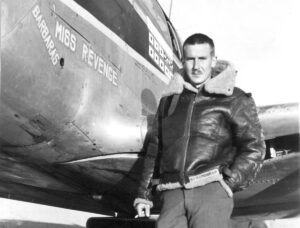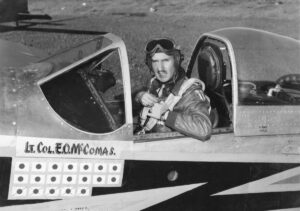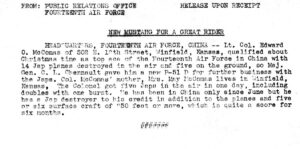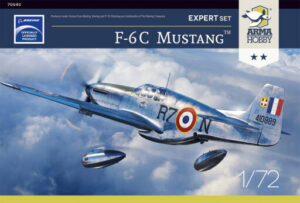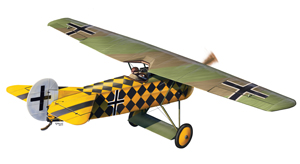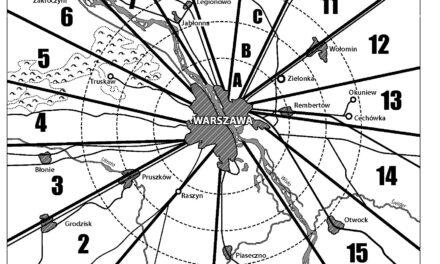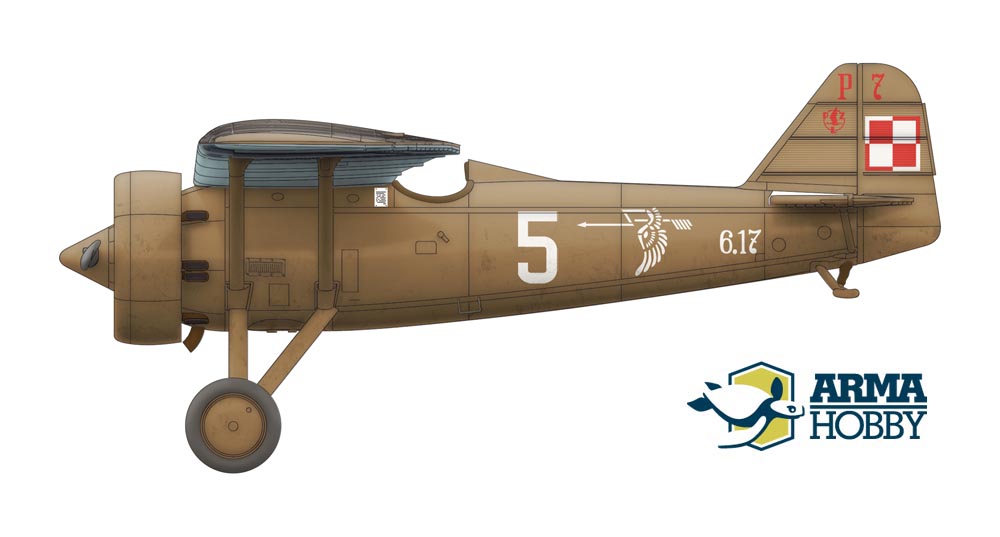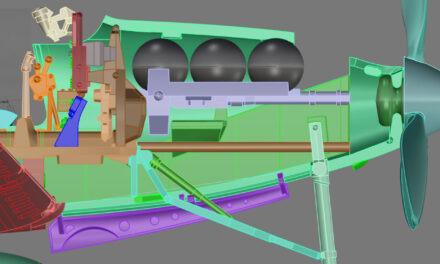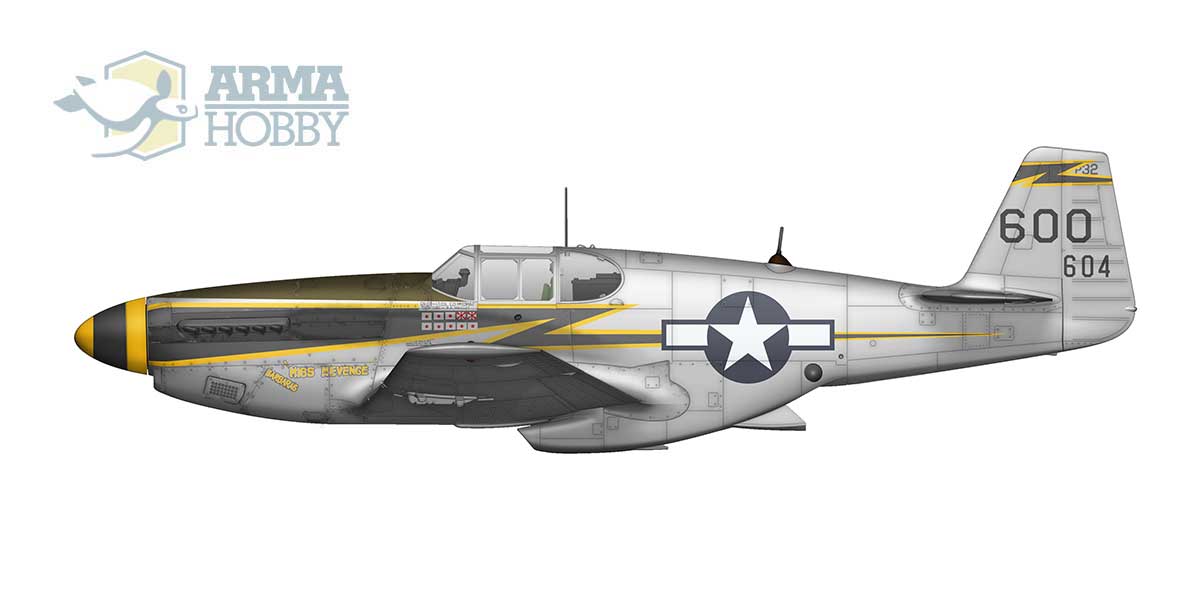
On 16 October 1944 Major McComas, CO 118th Tactical Reconnaissance Squadron, 23rd Fighter Group, lead a flight of 10 P-51s and 8 Curtiss P-40s on an escort mission to protect 14th Air Force B-24 Liberators and B-25 Mitchells that were scheduled to bomb the Kowloon docks in Japanese occupied Hong Kong, with the P-51s providing medium cover for the bombers and the P-40s providing close cover. At 18,000-ft over the target area, Major McComas locked onto a black Tojo fighter. The Tojo was making a diving attack on a P-51 when McComas spotted the fighter and opened fire with the four Browning M2 .50-cal machine guns from approximately 60-degree deflection to dead astern. McComas observed hits in the cockpit and engine as the shells struck home. He then followed the Tojo down getting in good bursts until the Tojo crashed into the harbor just North of Hong Kong Island thus claiming his first confirmed victory.
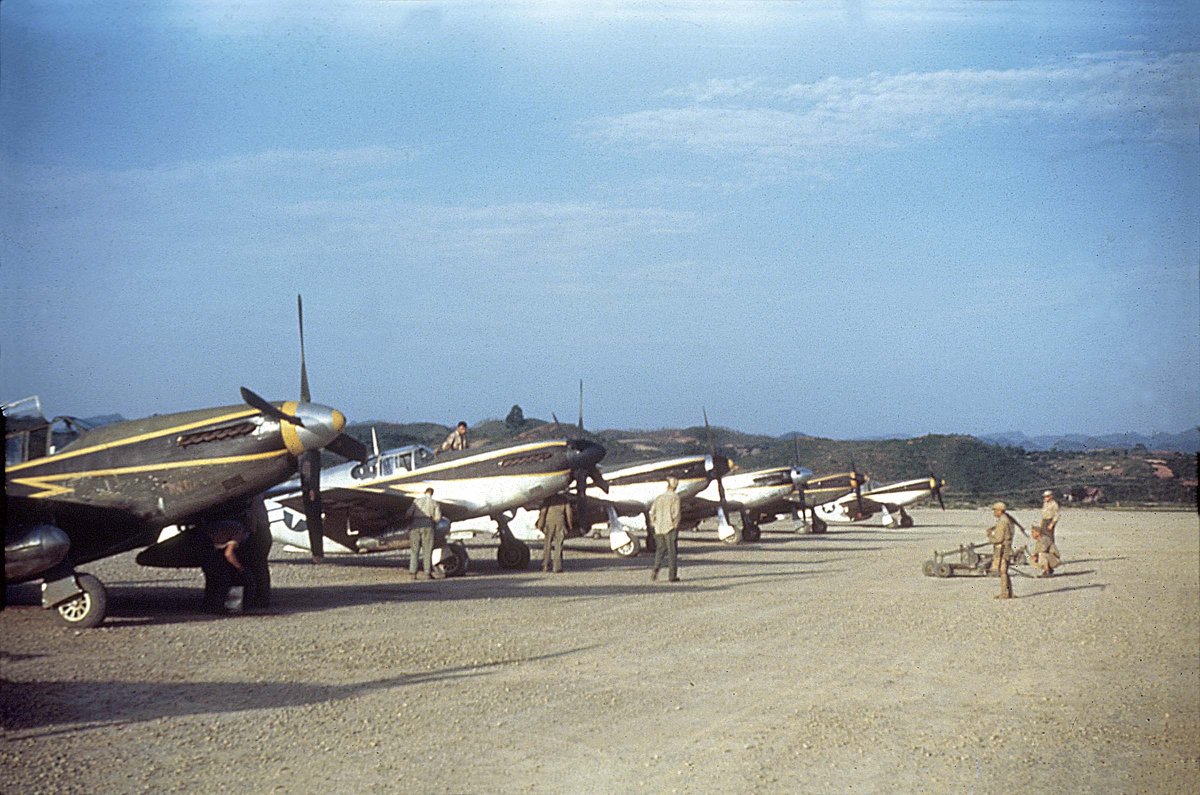
118th TRS flight line, Laohwangping, China, 1945. Photo by NAA tech Rep Jack Canary
Pushing the Merlin’s throttle forward, McComas began a rapid climb to join his squadron mates and while doing so he spotted a second Tojo also in a vertical climb. Fixing the fighter in his gunsight, McComas scored hits on the Tojo from nose to tail before breaking stalling out and breaking off the combat. He claimed this one as damaged. Over the next ten weeks Edward O. McComas would achieve fourteen aerial victories to become, briefly, the leading ace of the 14th Air Force. He would end his tour of duty as the fourth-ranked ace and the only ace-in-a-day in the 14th Air Force.
The Beginnings
Edward Otis McComas, born June 1919, grew up in Winfield, Kansas, and would go on to graduate from the city’s high school in 1937. Staying in Kansas, he attended Southwestern College and during his second year he decided to enroll in the college’s Civilian Pilot Training Corps. This lead him to enter the Army Air Corps in 1940 as a flying cadet. He received his wings and his commission as a 2ndLt on April 25, 1941. With America’s entry into the war, promotions came rapidly and he became a first lieutenant on 1 February 1942, captain on 8 July 1942, and major on 5 April 1943. In 1943 Major McComas was assigned to the 66th Reconnaissance Group from the Flying Training Command to become the Group Operations Officer. He took command of the 118th TRS while the unit was in Aiken, South Carolina.
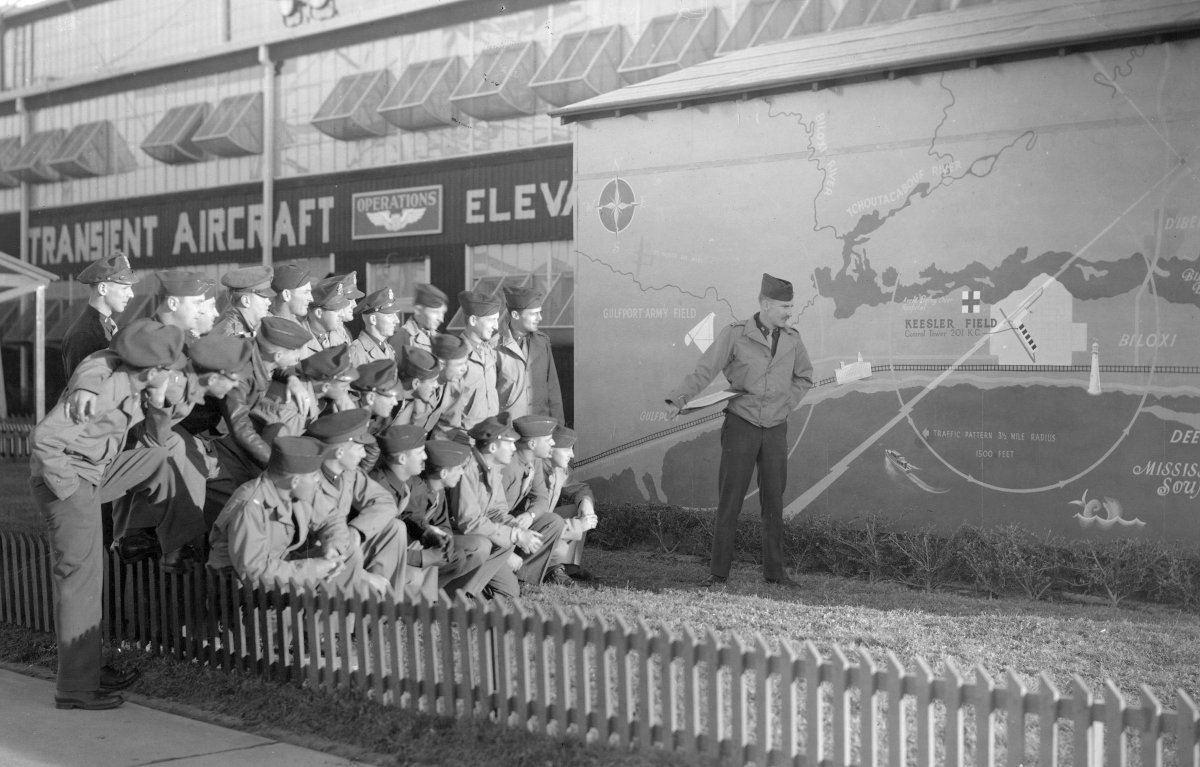 McComas briefs squadron pilots at Keesler Field during training in 1943
McComas briefs squadron pilots at Keesler Field during training in 1943
In preparing for combat deployment, the squadron’s flying activities continued at a rapid pace throughout September 1943. Simulated combat missions proliferated as Major McComas (Group Operations Officer) personally took on the squadron “hot shots” and one by one put them in their place. On 29 September 1943, the 118th TRS lost its Commanding Officer, Major Robert Wierman. The pilot was apparently maneuvering his Bell P-39 Airacobra at low level when the airplane entered a spin from which it did not recover. While reeling from the loss of their beloved commander, the squadron received another shock when Major McComas, not exactly everyone’s favorite candidate, was assigned as the new Commanding Officer.
However, McComas also had another side as recalled by Capt. George Kutcher: “In the USA, while preparing the 118th TRS for combat readiness, I heard McComas dealing with an enlisted man who needed better shoes. McComas said he would pay for the shoes. Someone later questioned him and he replied, ‘That’s why they pay me a major’s salary.’ ”
To combat
Major McComas, an aggressive pilot and exacting taskmaster, proceeded to restore the squadron’s shattered morale as he prepared the squadron for overseas deployment to the CBI. After final training at Key Field, Meridian, Mississippi the squadron traveled by ship to India in January 1944.
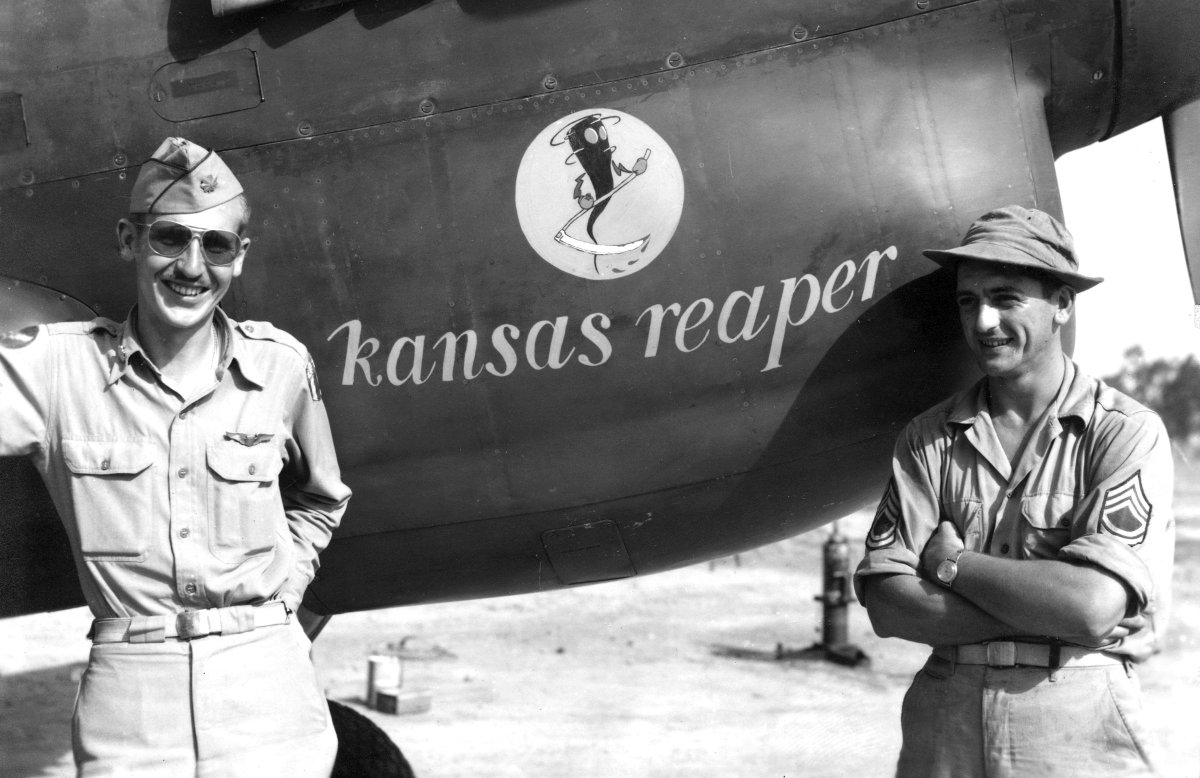 India 1944. Maj. McComas & crew chief MSgt Mailette with McComas’ P-40
India 1944. Maj. McComas & crew chief MSgt Mailette with McComas’ P-40
The squadron’s first assignment in the China-Burma-India Theater was to protect the B-29 bases at Kharagpur and Chakulia, India. The mission soon changed when in June 1944 the squadron was assigned to Chennault’s 23rd Fighter Group in China. While conducting its mission of tactical reconnaissance, the squadron would be used more in the fighter and close air support role. While with the 23rd FG the squadron would achieve an enviable record of Japanese aircraft, shipping and material destroyed with three pilots becoming aces and LtCol McComas (promoted 1 November 1944) achieving the status of the fourth ranked ace in the 14th Air Force.
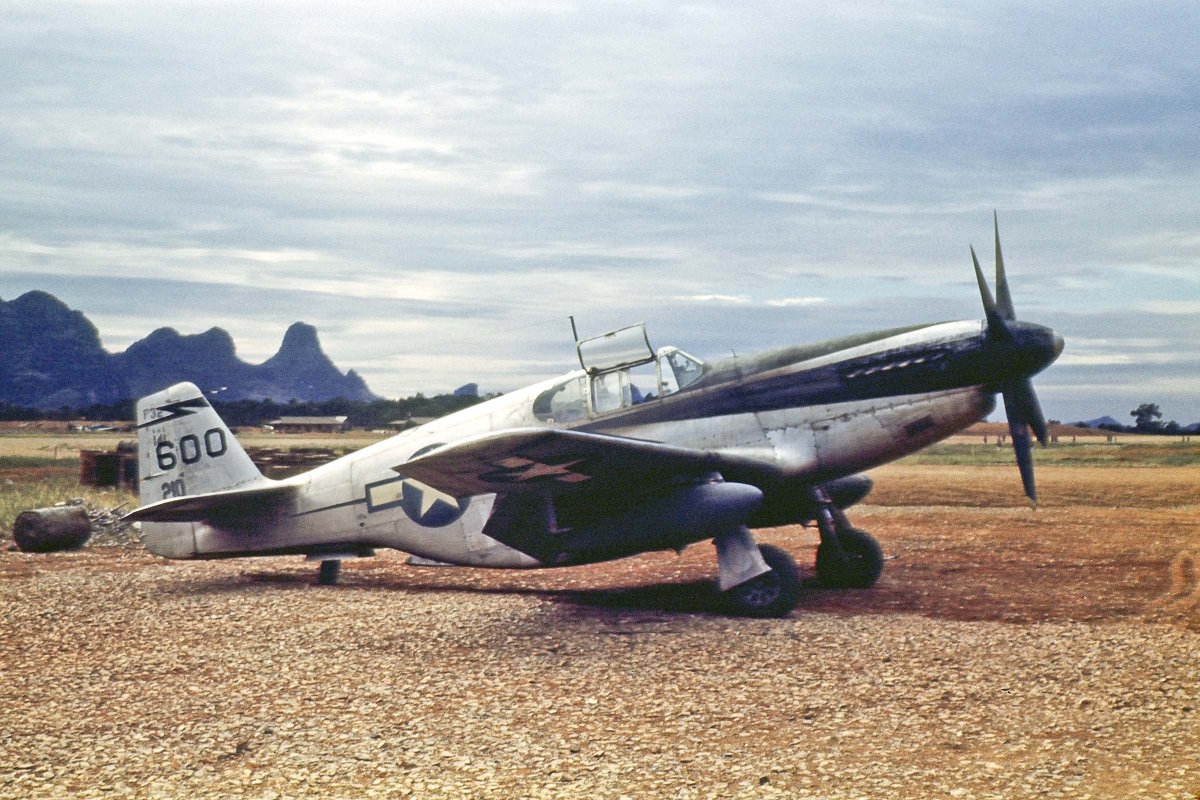 McComas’ P-51C-6-NT (F-6C) 42-103604 in initial marking. Photo by NAA tech Rep Jack Canary, Chengkung, China October 1944.
McComas’ P-51C-6-NT (F-6C) 42-103604 in initial marking. Photo by NAA tech Rep Jack Canary, Chengkung, China October 1944.
Captain Ray Crowell recalled a briefing with McComas in B/Gen. Casey Vincent’s office regarding a fighter aircraft strike on Hong Kong: “As the briefing was ending, Casey said loud and clear ‘If there any large battleships or many Japanese fleet ships, abort and I will send in the B-24s and B-25s.’ When we got back to the squadron, we had the briefing for all the pilots assigned to the mission. McComas then said if there was anything big in the harbor, then it was worth the whole squadron to get the target.”
Next two versions of McComas’ Mustang marking
Score: 14 airplanes in the air, 4 on the ground and a destroyer
LtCol McComas remained in command of the 118th TRS until January 1945 when, due to continuing physical problems, he was returned to the United States. During his tour in China he was credited with shooting down fourteen Japanese airplanes including five in one mission on 23 December 1944 – becoming the 14th AF’s only ace-in-a-day. Because of this, M/Gen. Chennault, on 25 December, presented LtCol McComas with a brand new P-51D-5-NT, 44-11280 which was painted with his full victory tally.
McComas’ P-51D-5-NT 44-11280
LtCol McComas was also credited with four airplanes destroyed on the ground and, with the aid of his wingman, the sinking of a Japanese destroyer in Victoria Harbor, Hong Kong. Captain Ray Crowell often flew wing for McComas and he commented that McComas always counted on his wingman: “I don’t think he ever looked back, he just expected you to be there.”
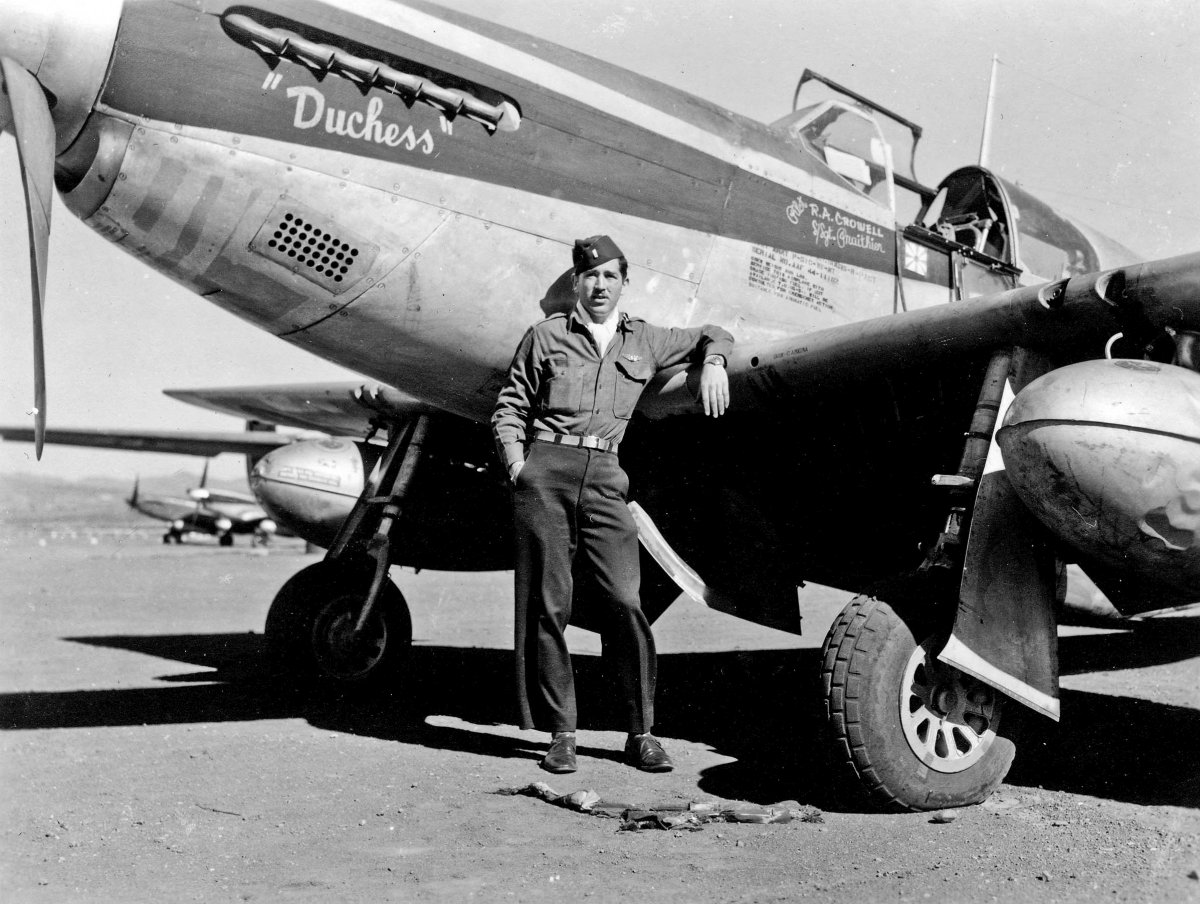
1stLt Ray Crowell and P-51C-11-NT (F-6C) 44-11102. He often flew wing for McComas
After the War – the Next War
Back in the USA, McComas made the decision to stay in the military. On 2 February 1946 he married Ruth Gail Friedman. Over the next few years he served with the 12th Tactical Air Command in Germany, was assigned command of a fighter group at Pope Field, North Carolina, and in 1949 attended the Air Command and Staff school at Maxwell AFB, Alabama, after which he was promoted to full Colonel. In 1950 he was assigned to FEAF HQ in Tokyo. He later joined the 8th Fighter-Bomber Group (Jet) in Korea and flew 35 Lockheed P-80 Shooting Star missions during that war and was the Commanding Officer from May 1951 to July 1951.

Edward O. McComas (on left) with squadron & Lockheed P-80 Shooting Star
However, his back problems became worse and he returned to the United States where he underwent several back surgeries. On 22 June 1954 he confided to one of his former 118th TRS pilots and wingman that the pain was no longer bearable. That evening he took his own life with a self-inflicted gunshot wound at his home in Alexandria, Virginia. He was 35 years old.
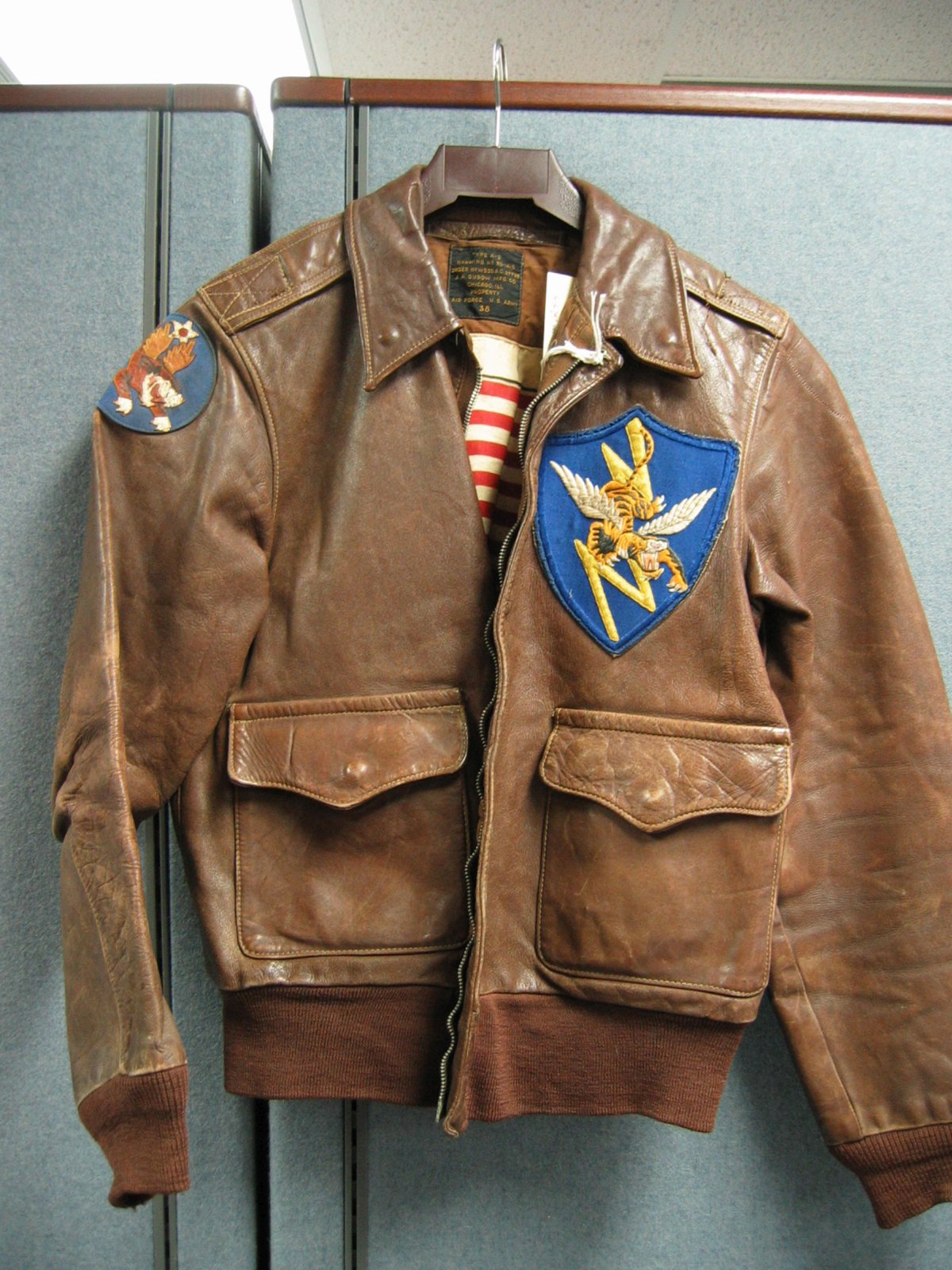 Edward O. McComas’ leather flight jacket preserved at the Air Force Academy
Edward O. McComas’ leather flight jacket preserved at the Air Force Academy
Honors and Decorations
Among his many honors, Col. McComas received the Silver Star for the sinking of the Japanese destroyer, the Distinguished Flying Cross with two oak leaf clusters, the Legion of Merit with oak leaf cluster, the Purple Heart with oak leaf cluster, the Air Medal with three oak leaf clusters and the Republic of China’s Order of the Flying Cloud. He was buried at Winfield, Kansas Highland Cemetery, with full military honors.
118th TRS decal was created by 1stLt Phil Dickey, squadron armament officer and artist. He designed the Black Lightning squadron markings
In 1955 Gail McComas was appointed the first hostess of the new Air Force Academy. “Mrs. Mac”, as she was known, served as hostess for formal cadet functions, arranged parties, organized dances and had many other formal responsibilities. She retired from the academy after 22 years and died on 27 January 1988.
This article was initially published in “Mustangs International”.
See also:
- F-6C Mustang™ Expert Set and more in the Arma Hobby webstore: link
Upon graduation from college in 1971, enlisted in the USMC and attended Navy flight training in Pensacola, FL. Served in the Marines for 7 years active duty and 3 years reserves. While working as a salesman in Kansas City, Missouri, also flew attack helicopters with the Army National Guard and Reserves from which retired in 1996. Robert was hired by United Airlines in 1997 after 8 years with a commuter airline, retiring in 2014.
Robert has been interested in the 118th TRS and reconnaissance P-51’s since 2000 when he found out that his uncle had served with that squadron as the armament officer and, as an artist, had designed the “Black Lightning” markings worn by their airplanes in China. Robert’s research into the Tac-R P-51’s has shown him how much misinformation has been published and posted on line about these airplanes. His goal is to provide updated information about these airplanes.
This post is also available in:
 polski
polski



